
Nordic Arctic: Sustainable Architecture Above the Arctic Circle
Source
Klára Pučerová, GJF
Klára Pučerová, GJF
Publisher
Tisková zpráva
26.08.2022 10:00
Tisková zpráva
26.08.2022 10:00
Exhibitions
Czech Republic
Prague
Old City
The autumn exhibition at the Jaroslav Fragner Gallery presents the landscape and architecture of Greenland, Norway including the Lofoten Islands and Svalbard, Sweden, and Iceland under the title NORDIC ARCTIC / Sustainable Architecture Beyond the Arctic Circle. Among the selected projects were designs from prominent studios and architects such as Bjarke Ingels Group, Dorte Mandrup, Einar Jarmund, Jan Olav Jensen, and Børre Skodvin, Peter Zumthor, Sami Rintala, and Dagur Eggertsson, Snøhetta, Steven Holl, or White Arkitekter. The accompanying program includes lectures, a debate, a workshop, and especially the launch of a large-format photographic publication of the same name.
The theme of sustainability is perceived here not only from the perspective of building concepts but also from the equally important aspect of the impact of mass tourism on natural wealth. A comprehensive approach to this problem (from the detailed preparation of competitions involving experts from many fields to the definition of only specific routes and their aesthetic expression and maintenance), along with the perception of landscape quality and emphasis on ecological footprints, is an example of good practice and exceptional architecture in extreme conditions. However, NORDIC ARCTIC offers a connection to another sphere – architecture and interventions in the landscape are presented in a visual form – it brings contemplative visual records of buildings and landscapes through the lens of photographer Jiří Havran, who has lived in Norway since 1974 and has been photographing architecture since 1989. In addition to his free creation and artistic projects in Norway and abroad, he has published around forty publications in his ARFO publishing house, processing the theme of the dialogue between Scandinavian landscape and architecture not only contemporary but also historical; a prime example is a substantial edition of books mapping the specifics of Norwegian sacred architecture from the Middle Ages to the present. In the Czech Republic, he exhibited at the City Gallery in his native Teplice (1991) and at the Jaroslav Fragner Gallery in Prague (2012, the exhibition and publication from architecture). He has long collaborated with GJF on projects dedicated to Nordic architecture, art, and sustainability (Artscape Norway, Artscape Iceland). The unique poetics of Havran's photographs offer a unique record of the transformation of romantic, but also very climatically harsh locations beyond the Arctic Circle in dialogue with tourism.
One of the fundamental motifs becomes the increasingly strong discussion about the role of sustainable architecture in adapting to climate change. The exhibition documents exemplary cases both in terms of landscape sustainability from an environmental perspective and regarding the increasing influx of tourists to exposed landscapes. It showcases possible strategies of professional institutions in Norway, Sweden, Iceland, or Denmark. A prime example is the unique collaboration system of experts from many sectors with Norwegian and world architects during the continuous project of National Tourist Routes (Nasjonale turistveger). Creativity and innovation with a humble approach to the material of exposed landscapes have become a model for other countries – including Iceland – in creating tourist infrastructure with an emphasis on protecting exceptional landscapes.
Another phenomenon is the larger buildings that play a significant role as cultural and social centers in the Scandinavian Arctic and are epicenters of social life in settlements beyond the Arctic Circle. We can name the Katuaq Culture Centre Nuuk, Sarakulturhus Skellefteå, UNIS – University Centre in Svalbard, or Hof Cultural & Conference Centre Akureyri, in a broader view of the city as the "Paris of the North" or "gateway to the Arctic," as Tromsø, the northernmost university town in the world, is called, showcasing a cultural and social infrastructure that engages in dialogue with historical heritage, including the revitalization of former docks and other industrial areas. The second urban complex presented is the capital of the Svalbard archipelago – Longyearbyen – with its mining tradition and transformation due to Arctic research, but also tourist expeditions that are shaping the new face of the town. Jiří Havran also captured the unique architectural atmosphere of the Russian former mining town of Pyramiden, which allows us to return to not-so-distant past times.
Innovative realizations and projects are also presented, showcasing a wide range of architectural concepts from leading Scandinavian studios – BIG, Dorte Mandrup, Henning Larsen, Snøhetta, White Arkitekter, Jensen & Skodvin Architects, Reiulf Ramstad Arkitekter, Rintala Eggertsson Architects, or Einar Jarmund & Co and others. Many of these buildings and objects have received various awards and have become a fundamental portfolio for professional discussion across scientific disciplines and institutions, including universities.
Exhibiting architects: 70°N arkitektur • ANDERSEN & SIGURDSSON ARCHITECTS • Arkitema • Asplan Viak • Basalt Architects • BIG • Biotope • Code arkitektur • Dorte Mandrup • Einar Jarmund & Co • Henning Larsen • Jensen & Skodvin Architects • Joar Nango • LPO Arkitekter • Manthey Kula Architects • MORFEUS arkitekter • Uffe Black Nielsen • Peter Zumthor & Partner • PUSHAK • Reiulf Ramstad Arkitekter • Rintala Eggertsson Architects • Schmidt Hammer Lassen Architects • Skapa • Snøhetta • Tham & Videgård Arkitekter • The Oslo School of Architecture and Design (AHO) • Vigsnæs+Kosberg++Arkitekter • White Arkitekter
Accompanying program:
September 8 / debate / GJF
Jiří Havran, Martin Fojtek (Galerie Fotografic), Dan Merta
September 29 – October 1 / student workshop / FUA TUL
Dagur Eggertsson (Rintala Eggertsson Architects), Jan Tyrpekl
October 26 / presentation and debate / 19:00 at GJF
Epos 257: Tromsø
Jan Vondrák, Jan Mach (mjölk): In the Context of Stars
Dalibor Hlaváček (FA ČVUT): School as a Laboratory
November 24 / presentation and debate, catalog launch / 19:00 at GJF
Marie Šabacká (Center for Polar Ecology JCU)
Josef Elster (Center for Polar Ecology JCU)
Karel Wolf (Around the World Festival)
catalog launch
The exhibition is held under the auspices of the Minister for European Affairs doc. PhDr. Mikuláš Bek, Ph.D.
It is supported by the EEA and Norway Grants; the partner of the exhibition is the Faculty of Art and Architecture of the Technical University in Liberec.
Media partners of the exhibition are the Arctic and Czech Culture and Science Festival and the travel festival Around the World.
The theme of sustainability is perceived here not only from the perspective of building concepts but also from the equally important aspect of the impact of mass tourism on natural wealth. A comprehensive approach to this problem (from the detailed preparation of competitions involving experts from many fields to the definition of only specific routes and their aesthetic expression and maintenance), along with the perception of landscape quality and emphasis on ecological footprints, is an example of good practice and exceptional architecture in extreme conditions. However, NORDIC ARCTIC offers a connection to another sphere – architecture and interventions in the landscape are presented in a visual form – it brings contemplative visual records of buildings and landscapes through the lens of photographer Jiří Havran, who has lived in Norway since 1974 and has been photographing architecture since 1989. In addition to his free creation and artistic projects in Norway and abroad, he has published around forty publications in his ARFO publishing house, processing the theme of the dialogue between Scandinavian landscape and architecture not only contemporary but also historical; a prime example is a substantial edition of books mapping the specifics of Norwegian sacred architecture from the Middle Ages to the present. In the Czech Republic, he exhibited at the City Gallery in his native Teplice (1991) and at the Jaroslav Fragner Gallery in Prague (2012, the exhibition and publication from architecture). He has long collaborated with GJF on projects dedicated to Nordic architecture, art, and sustainability (Artscape Norway, Artscape Iceland). The unique poetics of Havran's photographs offer a unique record of the transformation of romantic, but also very climatically harsh locations beyond the Arctic Circle in dialogue with tourism.
One of the fundamental motifs becomes the increasingly strong discussion about the role of sustainable architecture in adapting to climate change. The exhibition documents exemplary cases both in terms of landscape sustainability from an environmental perspective and regarding the increasing influx of tourists to exposed landscapes. It showcases possible strategies of professional institutions in Norway, Sweden, Iceland, or Denmark. A prime example is the unique collaboration system of experts from many sectors with Norwegian and world architects during the continuous project of National Tourist Routes (Nasjonale turistveger). Creativity and innovation with a humble approach to the material of exposed landscapes have become a model for other countries – including Iceland – in creating tourist infrastructure with an emphasis on protecting exceptional landscapes.
Another phenomenon is the larger buildings that play a significant role as cultural and social centers in the Scandinavian Arctic and are epicenters of social life in settlements beyond the Arctic Circle. We can name the Katuaq Culture Centre Nuuk, Sarakulturhus Skellefteå, UNIS – University Centre in Svalbard, or Hof Cultural & Conference Centre Akureyri, in a broader view of the city as the "Paris of the North" or "gateway to the Arctic," as Tromsø, the northernmost university town in the world, is called, showcasing a cultural and social infrastructure that engages in dialogue with historical heritage, including the revitalization of former docks and other industrial areas. The second urban complex presented is the capital of the Svalbard archipelago – Longyearbyen – with its mining tradition and transformation due to Arctic research, but also tourist expeditions that are shaping the new face of the town. Jiří Havran also captured the unique architectural atmosphere of the Russian former mining town of Pyramiden, which allows us to return to not-so-distant past times.
Innovative realizations and projects are also presented, showcasing a wide range of architectural concepts from leading Scandinavian studios – BIG, Dorte Mandrup, Henning Larsen, Snøhetta, White Arkitekter, Jensen & Skodvin Architects, Reiulf Ramstad Arkitekter, Rintala Eggertsson Architects, or Einar Jarmund & Co and others. Many of these buildings and objects have received various awards and have become a fundamental portfolio for professional discussion across scientific disciplines and institutions, including universities.
Exhibiting architects: 70°N arkitektur • ANDERSEN & SIGURDSSON ARCHITECTS • Arkitema • Asplan Viak • Basalt Architects • BIG • Biotope • Code arkitektur • Dorte Mandrup • Einar Jarmund & Co • Henning Larsen • Jensen & Skodvin Architects • Joar Nango • LPO Arkitekter • Manthey Kula Architects • MORFEUS arkitekter • Uffe Black Nielsen • Peter Zumthor & Partner • PUSHAK • Reiulf Ramstad Arkitekter • Rintala Eggertsson Architects • Schmidt Hammer Lassen Architects • Skapa • Snøhetta • Tham & Videgård Arkitekter • The Oslo School of Architecture and Design (AHO) • Vigsnæs+Kosberg++Arkitekter • White Arkitekter
Accompanying program:
September 8 / debate / GJF
Jiří Havran, Martin Fojtek (Galerie Fotografic), Dan Merta
September 29 – October 1 / student workshop / FUA TUL
Dagur Eggertsson (Rintala Eggertsson Architects), Jan Tyrpekl
October 26 / presentation and debate / 19:00 at GJF
Epos 257: Tromsø
Jan Vondrák, Jan Mach (mjölk): In the Context of Stars
Dalibor Hlaváček (FA ČVUT): School as a Laboratory
November 24 / presentation and debate, catalog launch / 19:00 at GJF
Marie Šabacká (Center for Polar Ecology JCU)
Josef Elster (Center for Polar Ecology JCU)
Karel Wolf (Around the World Festival)
catalog launch
The exhibition is held under the auspices of the Minister for European Affairs doc. PhDr. Mikuláš Bek, Ph.D.
It is supported by the EEA and Norway Grants; the partner of the exhibition is the Faculty of Art and Architecture of the Technical University in Liberec.
Media partners of the exhibition are the Arctic and Czech Culture and Science Festival and the travel festival Around the World.
The English translation is powered by AI tool. Switch to Czech to view the original text source.
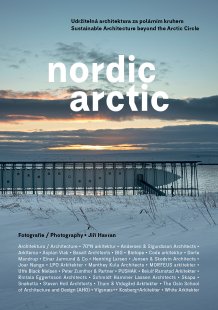
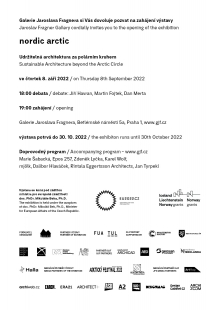
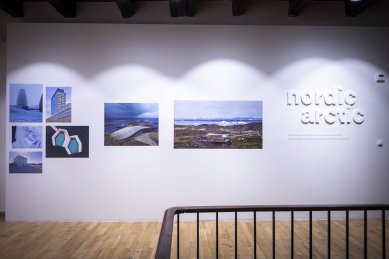
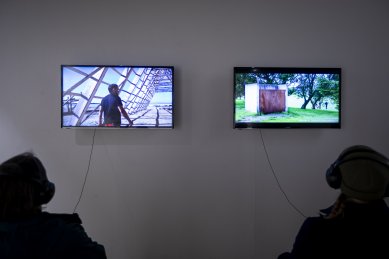
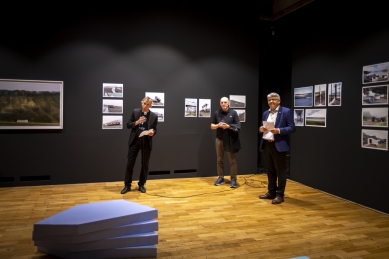
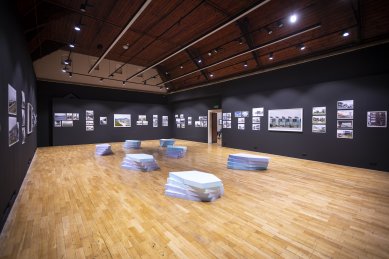
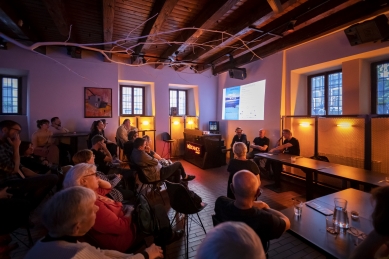
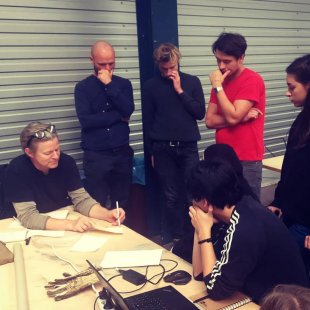
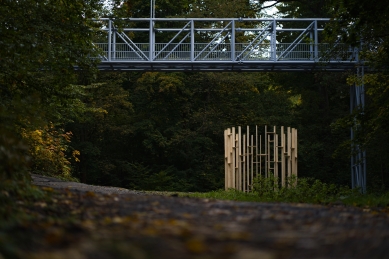
0 comments
add comment
Related articles
0
30.11.2022 | Nordic Arctic - new publication from the Jaroslav Fragner Gallery
0
15.10.2022 | Art and Architecture: Epic 257, mjölk, FA CTU - discussion at GJF
0
18.02.2016 | The exhibition presents the connection between nature and contemporary art in Norway
0
06.02.2016 | Artscape Norway - invitation to the exhibition at GJF










